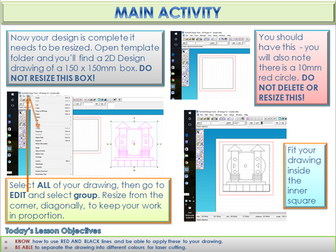KS3 / 4 2D Design Memphis Inspired Clocks
<p>This is a fun, ready to use 11 lesson laser cutter project that I have successfully run with Yr8 students for a few years, but would be equally suitable for Yr9 or even adapted slightly to cater for KS4.<br />
It introduces students to Techsoft 2D Design and how to use the laser cutter. It also includes information on Memphis and students will need to study this movement so that they can use it as a source of inspiration. There is also some investigative work on plastics.<br />
As the work progresses there are a number of aspects that students can work on, so there is a certain amount of independence and self management - especially for the more able. I usually limit the number of colours students can use to a maximum of four, ( I may go to 5 with particularly competent students) and some students will only use two colours. I have used both Essex Grey Board and Foam Board for modeling and testing purposes and both have their merits. Depending on the quality of your laser cutter, the Foam Board may not be a viable option. Either way, modeling first helps students get to grips with iterative designing and they are able to test their 2D Design drawings as well as the designs and then modify their 2D Designs accordingly.<br />
This pack includes a full set of lesson PowerPoints for 11 lessons, with starters, plenaries, lesson objectives and Thinking School methodologies if your school is into that. There is a student workbook which I uploaded and got students to use electronically, but a few quick modifications ( deleting some instructions) and it could simply be printed out for students to use in hard format.<br />
I have left both the lessons and the workbooks as PowerPoints so you are able to make your own alterations.</p>
